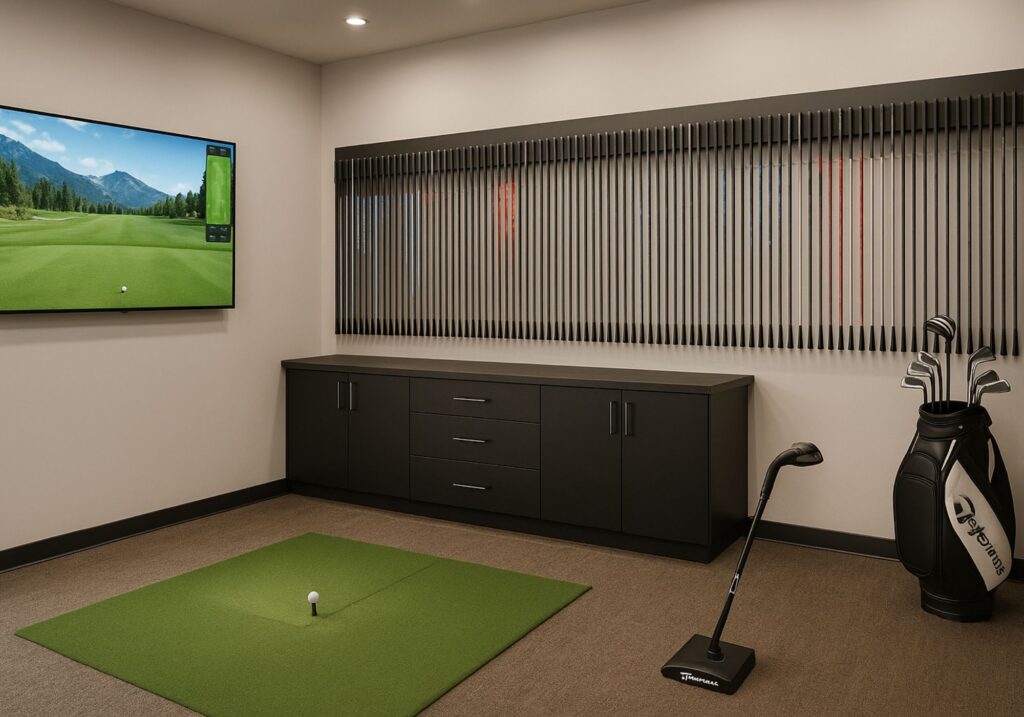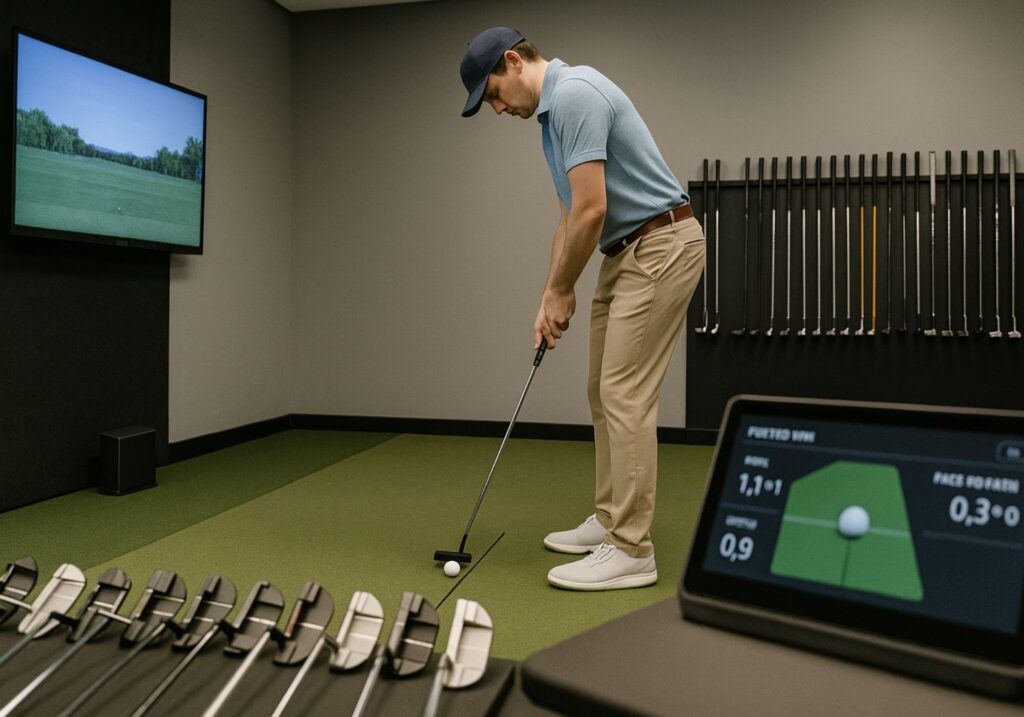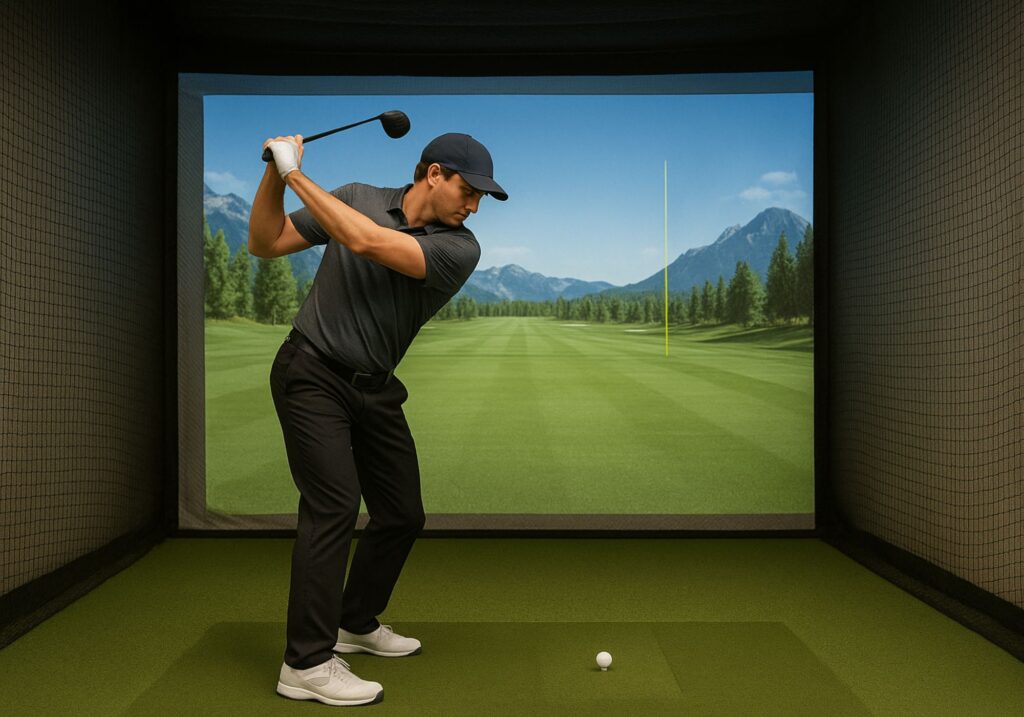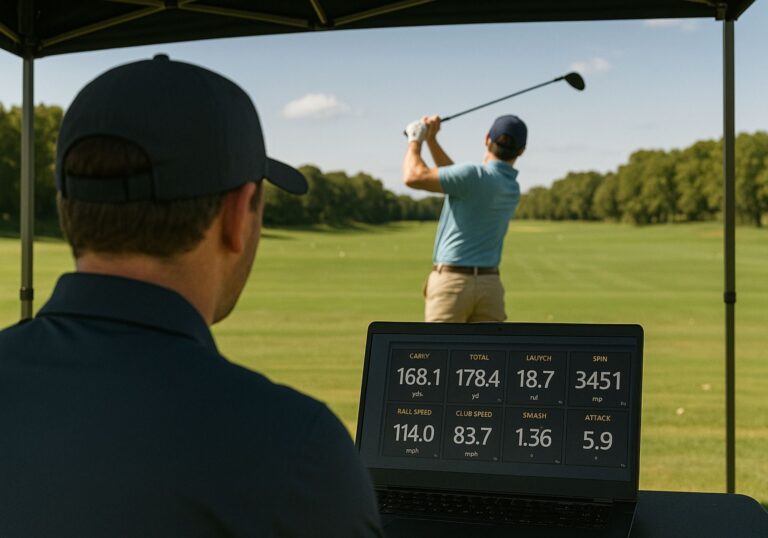Not sure if a fitting is worth it?
Many golfers hesitate when it comes to club fittings. Maybe you’ve asked yourself:
- Am I good enough to get fit?
- Won’t I just improve and need new clubs anyway?
- Isn’t fitting only for low-handicap players?
The truth is simple. You are absolutely good enough. And the sooner you get clubs that fit your swing, the better your experience with the game will be.
Why getting fit actually matters
Golf is already a tough game. Playing with equipment that doesn’t fit your swing makes it even harder.
Even if you’re still working on consistency, you already have swing patterns. Your posture, tempo, grip, and how you deliver the club into the ball all create tendencies. Fitting takes those tendencies into account and gives you gear that supports them.
That means more consistent contact, better ball flight and a higher chance of enjoying every round. It doesn’t mean you need to break par to justify it. Whether you’re shooting 72 or 102, fitted clubs help you play better and enjoy the process more.
What a fitting actually gives you
Fittings aren’t just about finding the “best” brand or chasing distance. They’re about finding what works for your swing and what helps you shoot better scores more often.
A proper fitting helps with:
- Consistency. When a club fits your body and swing, you get tighter dispersion and fewer extreme misses.
- Comfort. Clubs that are the right length, lie and weight feel easier to swing.
- Launch and spin. Getting your driver or irons into the right window makes a big difference in carry distance and control.
- Confidence. Standing over the ball with gear that suits you helps you swing more freely.
This isn’t about playing perfect golf. It’s about removing the obstacles you don’t need to be fighting.

Getting started: how to approach your first fitting
If you’re considering a fitting for the first time, here are some tips to make the experience better:
- Set a clear budget. Let the fitter know what you’re willing to spend. Good fitters will work within it and find smart choices, even if that means sticking with stock shafts or last year’s models.
- You don’t need to buy right away. Feel free to use a fitting as information-gathering. Try clubs again at demo days or indoors on another day. Give yourself time to process it.
- Be honest with your fitter. If you’re having an off day, let them know. If you’re feeling sore, nervous, or tired, that’s relevant. Fitters are there to help, not judge.
- Know your preferences. If you like a certain look, sound, or brand, mention it. If you really dislike something, speak up. Most manufacturers now offer great gear, and your fitter can help you balance performance with personal preference.
- Stay open-minded. Some of the best-performing clubs may not be what you expected. That’s okay. The goal is finding what helps your swing, not proving anything to anyone.
- Ask questions. Don’t be afraid to learn during the process. Fitters love explaining why something is working and helping you understand your numbers.
A few basics that are helpful to know
You don’t need to be a gearhead to benefit from a fitting, but understanding a few core terms can help:
- Loft refers to the angle of the clubface. Higher loft means a higher ball flight and generally more spin. Lower loft creates a flatter, more penetrating flight. Loft needs to match your swing speed and launch angle to optimize carry and roll.
- Lie angle is the angle between the shaft and the sole of the club. Lie angle affects the start direction of your shot. If it’s too flat, shots tend to start right (for RH golfer). If it’s too upright, they tend to start left. Getting this wrong can lead to consistent misses that aren’t necessarily your fault.
- Shaft flex and weight play a big role in timing, tempo, and feel. The right flex helps you load the club properly and deliver it consistently. The wrong shaft can cause pushes, hooks, or even inconsistent contact. It’s not about being “strong enough” for a stiff shaft, but rather it’s about matching your natural swing DNA.
Your fitter will walk you through all of this. You just need to be open, relaxed, and ready to learn.

Why fittings are not just for elite players
One of the biggest misconceptions in golf is that fittings are only for single-digit handicaps. The truth is, higher-handicap players often benefit the most from getting fit.
If you’re a newer golfer, having clubs that match your size, posture, and tempo gives you a more stable foundation to build on. It won’t fix everything, but it removes variables that make the game harder than it needs to be.
And if you’re working with a coach or trying to improve your swing, having properly fit gear helps you see real progress instead of wondering if your equipment is holding you back.
Not quite ready? Here’s when to wait
While we believe most golfers can benefit from a fitting, here are a few situations where it may be better to wait:
- If you’re just getting started and haven’t developed a repeatable swing yet
- If you’re about to make a major swing change with a coach
- If you’re injured or taking a long break from the game
In those cases, focus on building a consistent swing first. Once your motion stabilizes a bit, that’s a great time to get fit.
Rechecking over time
Getting fit isn’t a one-and-done event. Over time, your swing, posture, or speed may change. It’s smart to revisit a fitting every once in a while, especially if you notice your clubs starting to feel off or your performance dipping.
Not to mention that fittings are fun!
Also, if you’ve made major improvements or started playing a lot more golf, it might be time for a check-in. Your gear should keep up with your game.

Final thoughts
You do not need to be a scratch golfer to benefit from a club fitting. You just need to be a golfer who wants to enjoy the game more.
Fittings are about making golf easier, more consistent and more fun. They’re about finding tools that match your swing, your body and your goals.
The right clubs can help you play better. And when the gear is working with you instead of against you, you’ll feel the difference almost immediately.
Your turn
Have you ever been fit for clubs? Are you thinking about it now? What helped you make the decision—or what’s still holding you back? Share your story. You never know who it might help.
